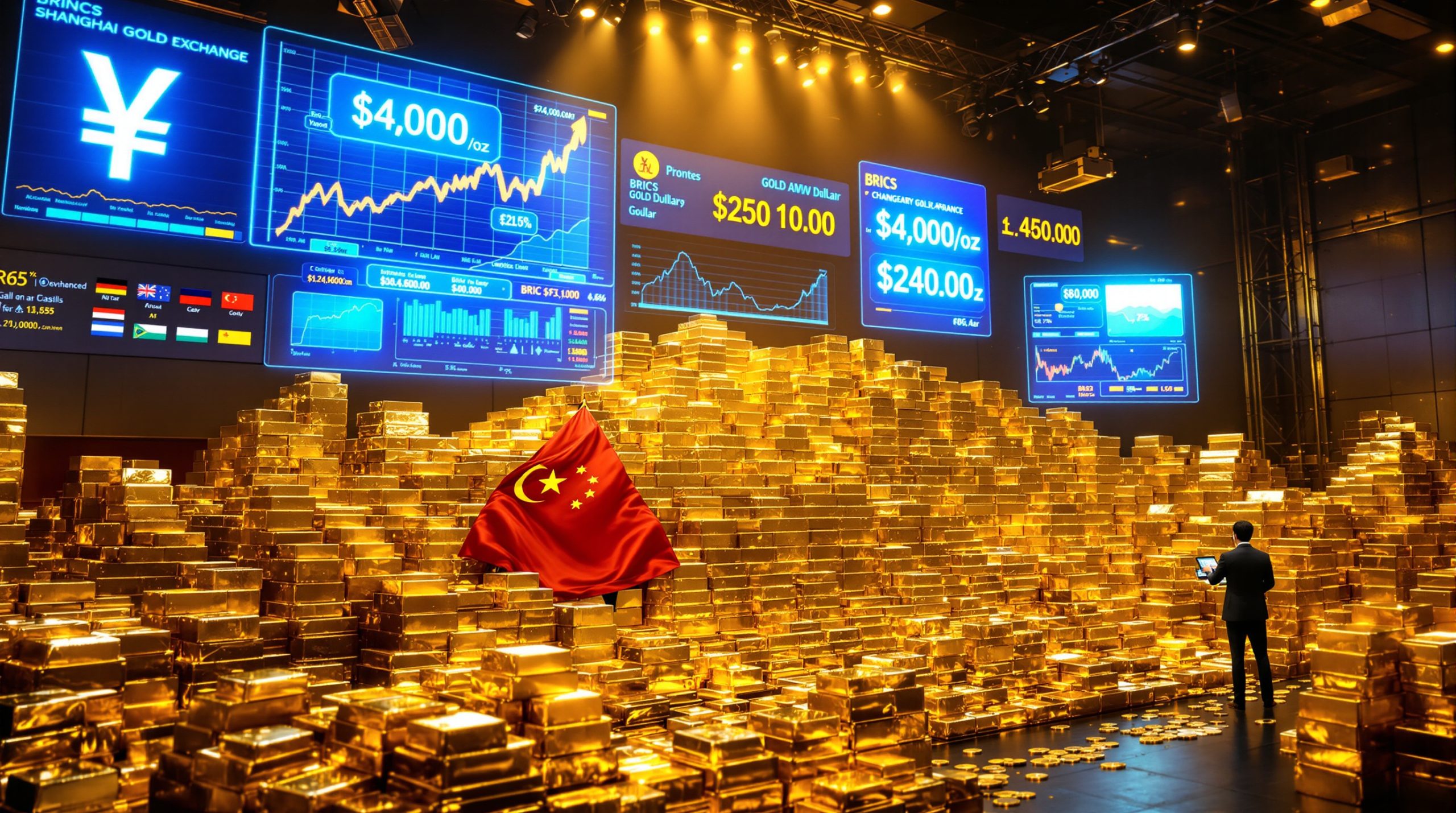What Makes Uranium a Unique Investment Opportunity?
Uranium stands apart in the commodities space as a critical material with distinctive market dynamics. Unlike other commodities, uranium's value centers on its irreplaceable role in nuclear power generation—a carbon-free, baseload energy source experiencing renewed global attention amid climate and energy security concerns.
The investment thesis for investing in uranium revolves around a fundamental supply-demand imbalance that continues to widen. With nuclear power experiencing a renaissance driven by energy security concerns, decarbonization goals, and technological innovations, the demand trajectory points firmly upward while supply faces significant constraints.
The Fundamental Supply-Demand Imbalance
The uranium market is experiencing a widening gap between production capacity and consumption needs. This structural imbalance stems from:
- Years of underinvestment in mining development following the Fukushima incident
- Systematic depletion of secondary supplies and utility inventories
- Limited new discoveries and increasingly challenging permitting environments
- Technical expertise shortages across the mining sector
As John Cash, CEO of UR Energy, noted during a recent industry panel: "Even at $80 per pound long-term price, we're not seeing the production response you'd typically expect in commodities. The era of excess inventory is over." This sentiment reflects the market's irreversible transition from oversupply to structural deficit.
Industry analysis indicates that while uranium demand requires approximately 180-200 million pounds annually, primary production has struggled to exceed 140 million pounds in recent years—creating a persistent deficit that's increasingly difficult to fill as secondary supplies diminish.
How Is Global Nuclear Power Growth Driving Uranium Demand?
Nuclear energy is experiencing a significant resurgence worldwide, creating multiple demand growth vectors for uranium that weren't anticipated even five years ago.
China's Aggressive Nuclear Expansion
China stands at the forefront of nuclear development globally:
- Currently constructing 26 new reactors with an additional 10 recently approved
- Demonstrating consistent ability to complete projects on schedule (5-6 years)
- Establishing comprehensive domestic supply chains for efficient reactor construction
- Setting targets to triple nuclear capacity by 2035
This systematic approach to nuclear development provides high visibility on future uranium demand. Andre Edenberg, CEO of Yellow Cake PLC, points out: "China has developed a standardized reactor design and construction methodology that allows them to build plants with remarkable efficiency. It's essentially a factory approach to nuclear construction that Western nations haven't matched."
China's uranium requirements are projected to grow from approximately 16 million pounds annually today to over 40 million pounds by 2035, representing one of the most significant demand vectors in the market.
Nuclear Power Reversals in Western Nations
Several countries previously committed to phasing out nuclear power are reconsidering their positions in response to energy security concerns and climate goals:
- Belgium extending reactor lifetimes by 10 years instead of proceeding with decommissioning
- Spain halting its nuclear exit plan following Europe's energy crisis
- Denmark exploring nuclear energy development after a 40-year prohibition
- Italy reconsidering its nuclear stance in light of energy security vulnerabilities
"What's particularly striking is the complete reversal in political sentiment," notes Edenberg. "Countries that had nuclear plants scheduled for closure are now extending lifetimes by decades, while nations that abandoned nuclear entirely are actively pursuing new development. This wasn't in anyone's forecast even three years ago."
These policy reversals represent unexpected demand growth that market forecasts didn't account for, creating additional uranium requirements that could exceed 15-20 million pounds annually by 2030.
Efficiency Improvements in Existing Reactors
Beyond new builds, significant uranium demand is emerging from existing reactors through:
- License extensions for aging plants (typically 20-year renewals)
- Power uprates increasing generation capacity by 10-20%
- Higher enrichment of fuel materials (increasing from 4.5% to 5-6%)
- Extended cycles between refueling outages (from 18 months to 24+ months)
These efficiency improvements collectively increase uranium requirements without requiring new reactor construction. As John Cash explains: "When a plant increases its generating capacity through uprates, it needs proportionally more uranium. It's hidden demand growth that often goes unnoticed in market analysis but adds up to significant requirements across the global fleet."
Industry experts estimate that efficiency improvements across the existing reactor fleet could add demand equivalent to 10-15 new reactors by 2030.
Why Is Uranium Supply Struggling to Keep Pace?
The challenges facing uranium production extend beyond typical mining constraints, creating a persistent supply-side bottleneck that price signals alone cannot quickly resolve.
Production Response Limitations
Even with rising prices, uranium production faces numerous obstacles:
- Extended permitting timelines (averaging 7+ years in Western jurisdictions)
- Specialized workforce shortages across the mining sector
- Equipment and contractor availability constraints
- Technical complexity of uranium extraction methods
These factors create significant lag times between price signals and production responses. John Cash explains: "If the spot price went to $200 a pound today, it wouldn't mean more production tomorrow. The reality is that bringing meaningful new production online takes years, not months."
Industry analysts highlight that even projects considered "shovel-ready" typically require 18-24 months from final investment decision to first production, with larger greenfield projects requiring 5-7 years. Furthermore, the US uranium production challenges create additional complications for the market to overcome.
Kazakhstan's Production Challenges
Kazakhstan, responsible for approximately 40% of global uranium production, faces mounting difficulties:
| Challenge | Impact |
|---|---|
| Sulfuric acid shortages | Production delays and 15-20% higher processing costs |
| Aging deposits | Declining grades from 0.1% to below 0.07% in key areas |
| Transportation logistics | 40% longer transit times to Western markets |
| Geopolitical realignment | Growing concentration of exports to China (over 60%) |
After peaking at around 60 million pounds in 2016, Kazakh production has struggled to maintain consistent output levels despite price incentives. Recent analysis indicates that Kazakhstan's production peaked in 2018 and may decline by 15-20% over the next decade as deposits age and grades decline.
Market Bifurcation Between East and West
The uranium market is increasingly splitting along geopolitical lines:
- Kazakhstan and other Eastern producers prioritizing Chinese and Russian customers
- Western utilities facing more limited supply options
- Transportation economics favoring regional supply chains
- Growing concerns about security of supply in Western markets
This bifurcation creates different market dynamics in different regions. As Andre Edenberg notes: "We're increasingly seeing two separate uranium markets developing—an Eastern market dominated by China, Russia, and Kazakhstan, and a Western market that's tighter on supply with fewer options. Western utilities are starting to pay premiums for material with Western origin."
Recent industry data shows that approximately 70% of newly contracted uranium for Western utilities specifies origin requirements that exclude material from Russia and certain other jurisdictions. The US uranium import ban has further complicated this situation, creating additional pressures on supply chains.
What Role Do Small Modular Reactors Play in Uranium's Future?
Small Modular Reactors (SMRs) represent a potential game-changing technology for nuclear deployment and uranium demand, with significant progress being made toward commercial reality.
Expanding Nuclear's Addressable Market
SMRs open nuclear power to applications and locations previously unsuitable for conventional plants:
- Smaller grid systems unable to accommodate gigawatt-scale plants
- Remote locations with limited transmission infrastructure
- Industrial applications requiring dedicated power sources
- Countries with smaller electricity demands or limited financing capacity
Andre Edenberg provides a compelling analogy: "SMRs are to conventional nuclear what iPads were to computers—a technology that will find applications we haven't even imagined yet. They're not just smaller versions of existing plants but represent a fundamental rethinking of nuclear deployment."
Market analysis suggests SMRs could expand nuclear's addressable market by 30-40% by enabling deployment in locations and applications where conventional plants aren't feasible.
Current SMR Development Progress
Several advanced SMR projects are moving toward commercialization:
- TerraPower breaking ground on a demonstration Natrium reactor in Wyoming (345 MWe)
- BWXT and Radiant developing transportable microreactor designs (1-5 MWe)
- Rolls-Royce advancing its 470 MWe SMR in the UK with site selection underway
- NuScale receiving final design certification from the U.S. NRC for its 50 MWe module
The U.S. Department of Defense is also exploring micro-reactor technology for military applications, creating additional demand pathways. The DOD's Project Pele aims to deploy a 1-5 MWe mobile reactor by 2027.
Potential Impact on Uranium Demand
While SMRs may represent a smaller percentage of overall nuclear capacity (estimated around 20% by 2040), they could significantly impact uranium markets by:
- Accelerating deployment timelines compared to conventional plants (3-4 years vs. 7-10 years)
- Opening new markets previously closed to nuclear power
- Creating specialized fuel requirements with different enrichment profiles (many designs use HALEU at 5-19.75% enrichment)
- Establishing more distributed demand patterns
Industry forecasts suggest SMRs could contribute 15-20 million pounds of additional annual uranium demand by 2040, with potential for greater impact if adoption accelerates.
How Is Big Tech Influencing Nuclear Energy and Uranium Markets?
The explosive growth of artificial intelligence and data centers is creating unexpected synergies with nuclear power, establishing a new demand vector that few anticipated.
AI's Power-Hungry Requirements
Advanced computing applications like AI training require:
- Massive, stable baseload power (large AI models require 500-1,000 MW during training)
- Carbon-free energy sources to meet ESG requirements
- Reliable supply unaffected by weather or grid instability (99.999% uptime)
- Scalable generation capacity that can grow with computing needs
These requirements align perfectly with nuclear power's strengths. John Cash observes: "The power requirements for AI and data centers are staggering. A single large AI training center consumes as much electricity as a city of 200,000 people. Solar and wind can't provide the reliability and density these applications need—nuclear is the obvious solution."
Industry analysis indicates that data centers alone could increase electricity demand by 5-8% annually over the next decade, with AI applications accelerating this growth.
Strategic Partnerships Emerging
Several notable collaborations between tech and nuclear sectors have emerged:
- Constellation Energy working with Microsoft on dedicated nuclear power agreements
- Tech companies exploring investment in new nuclear projects to secure future power requirements
- Remote site co-location opportunities pairing data centers with SMRs
- Long-term power purchase agreements supporting new nuclear development
As Andre Edenberg notes: "We're seeing tech companies becoming active participants in the nuclear fuel cycle, not just as customers but potentially as investors and strategic partners. They recognize that securing reliable, carbon-free power for the next 30 years is a competitive advantage."
Recent power purchase agreements between tech companies and nuclear operators range from 10-20 years, providing the long-term revenue visibility that supports new nuclear investment.
Two Types of Data Center Applications
The nuclear-data center relationship takes two primary forms:
-
High-connectivity data centers requiring proximity to population centers and fiber networks, potentially served by existing nuclear plants
-
AI training facilities with less connectivity requirements that can be located in remote areas, ideal for pairing with new SMR deployments
Industry forecasts suggest that power demand from these applications could support 5-10 new nuclear units globally by 2035, creating additional uranium demand of 8-15 million pounds annually.
What Are the Fuel Cycle Bottlenecks Beyond Mining?
Uranium mining represents just one component of a complex nuclear fuel supply chain facing constraints, with conversion and enrichment presenting particular challenges.
Conversion Capacity Limitations
The process of converting uranium oxide (U₃O₈) to uranium hexafluoride (UF₆) faces severe bottlenecks:
- Limited facilities globally (only four commercial plants worldwide)
- Aging infrastructure requiring significant investment
- Technical complexity limiting new entrants
- Long lead times for capacity expansion (5+ years)
John Cash explains the severity of the situation: "Conversion capacity is potentially a more urgent bottleneck than mining itself. The Metropolis Works plant in Illinois was offline for years, and when Honeywell finally restarted it, they couldn't find enough experienced operators. You can't train someone to run these facilities overnight."
Current conversion capacity stands at approximately 62 million kgU globally, while requirements are projected to reach 75 million kgU by 2030, creating a potential bottleneck even if sufficient uranium is mined.
Enrichment Challenges
Uranium enrichment services are similarly constrained:
- Dominated by four major providers globally
- High capital costs for new capacity ($3-5 billion for a commercial-scale plant)
- Technology access restrictions due to non-proliferation concerns
- Long construction timelines for new facilities (minimum 5 years)
As Andre Edenberg notes: "Enrichment is perhaps the most technically sophisticated part of the fuel cycle. These aren't facilities you can quickly build or expand. When we talk about Western supply chain independence, enrichment is the most challenging bottleneck to address."
Industry analysis indicates that global enrichment capacity needs to increase by approximately 25-30% by 2030 to meet projected demand, requiring investments of $10-15 billion.
Western Supply Chain Vulnerabilities
The Western nuclear fuel cycle faces particular challenges:
- Historical dependence on Russian conversion and enrichment services (20-30% of Western requirements)
- Limited domestic alternatives in the U.S. and Europe
- Regulatory hurdles for new facility development
- Financing challenges for capital-intensive infrastructure
Recent sanctions against Russia have highlighted these vulnerabilities, with Western utilities scrambling to secure alternative supply sources. The ongoing tariff threats on uranium market have further complicated this landscape. As John Cash observes: "The current situation has forced Western utilities to confront the reality that they've outsourced critical parts of the fuel cycle to geopolitical competitors. Rebuilding those capabilities will take years and billions in investment."
How Should Investors Approach the Uranium Market?
Investors considering uranium exposure have several approaches to consider, each with different risk-reward profiles and market exposure characteristics.
Physical Uranium Holding Companies
Companies like Yellow Cake PLC offer direct exposure to uranium price movements:
- Hold physical uranium inventories (typically stored at licensed facilities)
- Provide pure commodity exposure without operational risks
- May have strategic supply agreements with major producers
- Trade at values closely linked to their uranium holdings
Andre Edenberg explains the unique value proposition: "Physical holding companies offer investors a way to gain exposure to uranium price movements without taking on the geological, technical, or operational risks of mining. We essentially warehouse uranium during periods of excess supply and release it during shortages."
Analysis indicates that physical holding companies typically trade at premiums of 10-15% to their net asset value during bull markets and discounts of 5-10% during bear markets.
Producing Miners vs. Developers
The uranium mining sector offers different investment profiles:
Producers:
- Generate current cash flow from operations
- Lower execution risk but potentially less leverage to price spikes
- More predictable valuation metrics (typically 6-10x cash flow)
- Often partially hedged through contract portfolios
Developers:
- Higher leverage to uranium price movements
- Greater execution and timing risks
- Potential for significant valuation rerating upon production (3-5x rerating common)
- Usually unhedged exposure to spot prices
John Cash provides insight from the producer perspective: "The key question for investors evaluating uranium miners isn't just reserves or resources—it's how quickly a company can respond to price signals, what their all-in production costs are, and how much of their production is already committed to contracts."
Industry data shows that producers typically achieve 70-80% of their production sold through term contracts at any given time, while developers retain full spot exposure. Recent events like the Paladin Energy halt demonstrate the operational challenges that even established producers can face.
Geographic Considerations
Investment decisions should account for geopolitical factors:
- Western producers potentially commanding premium valuations due to security of supply concerns
- Jurisdictional risks varying significantly across uranium-producing regions
- Emerging bifurcation between Eastern and Western uranium markets
- Transportation and logistics challenges affecting certain producers
Andre Edenberg highlights the growing importance of origin: "We're increasingly seeing Western utilities specify origin requirements in their contracts, with material from Australia, Canada, and the U.S. commanding premiums. This trend is likely to accelerate, creating differential pricing based on where the uranium comes from."
Recent contract data indicates premiums of 5-10% for uranium with Western origin compared to material without origin specifications.
What Price Catalysts Could Drive Uranium Markets?
Several potential catalysts could drive uranium prices in the coming years, with utility contracting behavior being particularly significant.
Utility Contracting Cycles
Utilities typically secure uranium supplies through long-term contracts:
- Current contracting cycle showing increased activity after years of minimal coverage
- Utilities facing uncovered requirements growing significantly after 2025 (estimated at 60%+ uncovered by 2028)
- Contract terms trending toward higher prices and longer durations (8-10 years vs. historical 5-7)
- Security of supply concerns influencing buying behavior
John Cash explains the importance of this cycle: "Utilities are methodical,
Ready to Capitalise on the Next Uranium Bull Market?
Discover real-time alerts on significant ASX uranium and mineral discoveries through Discovery Alert's proprietary Discovery IQ model, helping you identify actionable investment opportunities before the broader market. Visit Discovery Alert's discoveries page to understand how major mineral discoveries can lead to substantial returns and begin your 30-day free trial today.




